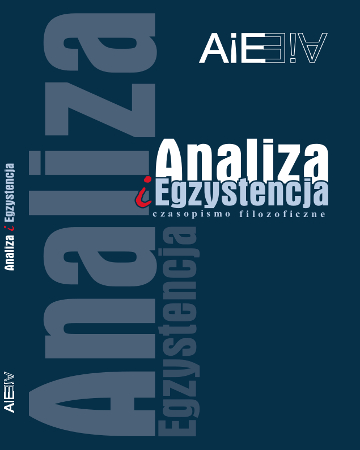
ISSN: 1734-9923
eISSN: 2300-7621
OAI
DOI: 10.18276/aie.2017.40-05





Issue archive /
40 (2017)
Rola zabawy w redukcji poczucia niepewności
(THE PLAYING ROLE IN REDUCTION OF THE LEVEL OF UNCERTAINTY)
| Authors: |
Adriana
Schetz
Uniwersytet Szczecinski |
| Keywords: | playing children development uncertainty dual processing theory M.W. Eysenck L.S. Vygotsky |
| Data publikacji całości: | 2017 |
| Page range: | 16 (95-110) |
Abstract
Cognitive, social and physical benefits of playing in development of children and youth are commonly known. In this paper I propose to consider an idea that playing is one of the best ways to achieve reduction of the level of uncertainty. I try to, as well, show how dual processing theory of information and action explains this kind of dependence.
Download file
Article file
Bibliography
| 1. | Bauer, J. (2008), Empatia. Co potrafią lustrzane neurony? Tłum. M. Guzowska-Dąbrowska. Warszawa: Wydawnictwo Naukowe PWN. |
| 2. | Boden, M.A. (2004). The Creative Mind: Myths And Mechanisms. London:Routledge. |
| 3. | Bzowska, L., Kownacka, R. (2000). Uczymy się bawiąc. Klasa I. Lublin: Klanza. |
| 4. | Bzowska, L., Kownacka, R. (2006). Uczymy się bawiąc. Klasa II. Lublin: Klanza. |
| 5. | Bzowska, L., Kownacka, R. (2002). Uczymy się bawiąc. Klasa III. Lublin: Klanza. |
| 6. | Brzezińska, A.I., Bątkowski, M., Kaczmarska, D., Włodarczyk, A., Zamęcka, N. (2011). O roli zabawy w przygotowaniu dziecka do dorosłego życia. Wychowanie w Przedszkolu, 10, 5–13. |
| 7. | Derakshan, N., Eysenck, M. (2009). Anxiety, Processing Efficiency, and Cognitive Performance: New Developments from Attentional Control Theory. European Psychologist, 2 (14), 168–176. |
| 8. | Dewey, J. (1938). Logic: The Theory of Inquiry. New York: Holt, Rinehart and Winston. |
| 9. | Dyner, J.W. (1983). Zabawy tematyczne dzieci w domu i w przedszkolu. Wrocław: Zakład Narodowy im. Ossolińskich. |
| 10. | Elkonin, D.B. (1984). Psychologia zabawy. Warszawa: WSiP. |
| 11. | Eysenck, M.W., Calvo, M.G. (1992). Anxiety and Performance: The Processing Efficiency Theory. Cognition and Emotion, 6 (6), 409–434. |
| 12. | Freedheim, D.K., Russ, S.W. (1992). Psychotherapy with Children. W: C.E. Walker, M.C. Roberts (red.), Handbook of Clinical Child Psychology (s. 765–781). Oxford: Wiley & Sons. |
| 13. | Hardy, L.T. (2007). Attachment Theory and Reactive Attachment Disorder: Theoretical Perspectives and Treatment Implications. Journal of Child and Adolescent Psychiatric Nursing, 1 (20), 27–39. |
| 14. | Henry, L. (2012). The Development of Working Memory in Children. London: Sage. |
| 15. | Inglis, I.R (2006). Centralna rola redukcji niepewności w kształtowaniu zachowania. W: W. Pisula (red.), Psychologia porównawcza (s. 112–138). Warszawa: Academica, Wydawnictwo Naukowe PWN. |
| 16. | Kahneman, D., Tversky, A. (1979). Prospect Theory: An Analysis of Decision Under Risk. Econometrica, 2 (47), 263–291. |
| 17. | Kędzior-Niczyporuk, E. (red.) (2003). Wprowadzenie do pedagogiki zabawy. Wybór tekstów drukowanych w „Kropli” w latach 1992–1994. Lublin: Klanza. |
| 18. | Klejbor, I., Turlejski, K. (2012), Different Strategies of Exploration and Phenotypic Variability of the Locomotor Behavior in New Environment: Comparative Study of the Laboratory Opossum (Monodelphis domestica) and Wistar Rat (Rattus norvegicus). Acta Neurobiologiae Experimentalis (Wars), 4 (72), 452–460. |
| 19. | Krechewsky, D. (1932). „Hypotheses” in Rats. Psychological Review, 39, 516–532. |
| 20. | Ledzińska, M., Zajenkowski, M., Stolarski, M. (2013). Temperament i poznanie: energetyczne i czasowe zaplecze umysłu. Warszawa: Wydawnictwo Naukowe Scholar. |
| 21. | Miller, E.K., Cohen, J.D. (2001). An Integrative Theory of Prefrontal Cortex Function. Annual Review of Neuroscience, 24, 167–202. |
| 22. | Okoń, W. (1989). Zabawa a rzeczywistość. Warszawa: WSiP. |
| 23. | Pearce, J.M. (2008). Animal Learning & Cognition: An Introduction. New York: Psychology Press. |
| 24. | Pisula, W. (1998). Ciekawość i zachowania eksploracyjne – psychologia nie tylko zwierząt. Warszawa: Wydawnictwa Uniwersytetu Warszawskiego. |
| 25. | Pisula, W. (2008). Play and Exploration in Animals – A Comparative Analysis. Polish Psychological Bulletin, 2 (39), 104–107. |
| 26. | Pisula, W. (2003). Psychologia zachowań eksploracyjnych zwierząt. Gdańsk: GWP. |
| 27. | Pisula, W. (red.) (2006). Psychologia porównawcza. Warszawa: Academica, Wydawnictwo Naukowe PWN. |
| 28. | Pisula, W., Szwacka Gonzalez, A., Rojek, E. (2003). Juvenile Play Fighting and Adult Investigatory Responses in Male Rats. Polish Psychological Bulletin, 1 (34), 47–49. |
| 29. | Posner, M.I., Petersen, S.E. (1990). The Attention System of the Human Brain. Annual Review of Neuroscience, 13, 25–42. |
| 30. | Power, G.T. (1999). Play and Exploration in Children and Animals. Hillsdale, NJ: Lawrence Erlbaum Associates. |
| 31. | Russ, S., Fiorelli, J. (2010). Developmental Approaches to Creativity. W: J . Kaufman, R. Sternberg (red.), The Cambridge Handbook of Creativity (s. 233–249). New York: Cambridge University Press. |
| 32. | Samuel, A.L. (1959). Some Studies in Machine Learning Using the Game of Checkers. IBM Journal on Research and Development, 3 (3), 210–229. |
| 33. | Smolucha, F. (1992). The Relevance of Vygotsky’s Theory of Creative Imagination for Contemporary Research on Play. Creativity Research Journal, 1 (5), 69–76. |
| 34. | Spinka, M., Newberry, R.C., Bekoff, M. (2006). Zabawa ssaków: nauka radzenia sobie w sytuacji zaskoczenia. W: W. Pisula (red.), Psychologia porównawcza (s. 171–212). Warszawa: Academica, Wydawnictwo Naukowe PWN. |
| 35. | Staddon, J.E.R. (2010). Adaptive Behavior and Learning. Cambridge: Cambridge University Press. |
| 36. | Szmidt, K.J. (2013). Trening kreatywności. Podręcznik dla pedagogów, psychologów i trenerów grupowych. Gliwice: Helion. |
| 37. | Vygotsky, L.S. (1967). Play and its Role in Development. Soviet Psychology, 3 (5), 62–76. |
| 38. | Zaorska, Z. (1998). Sztuka zabawy. Carpe Diem, 4. |